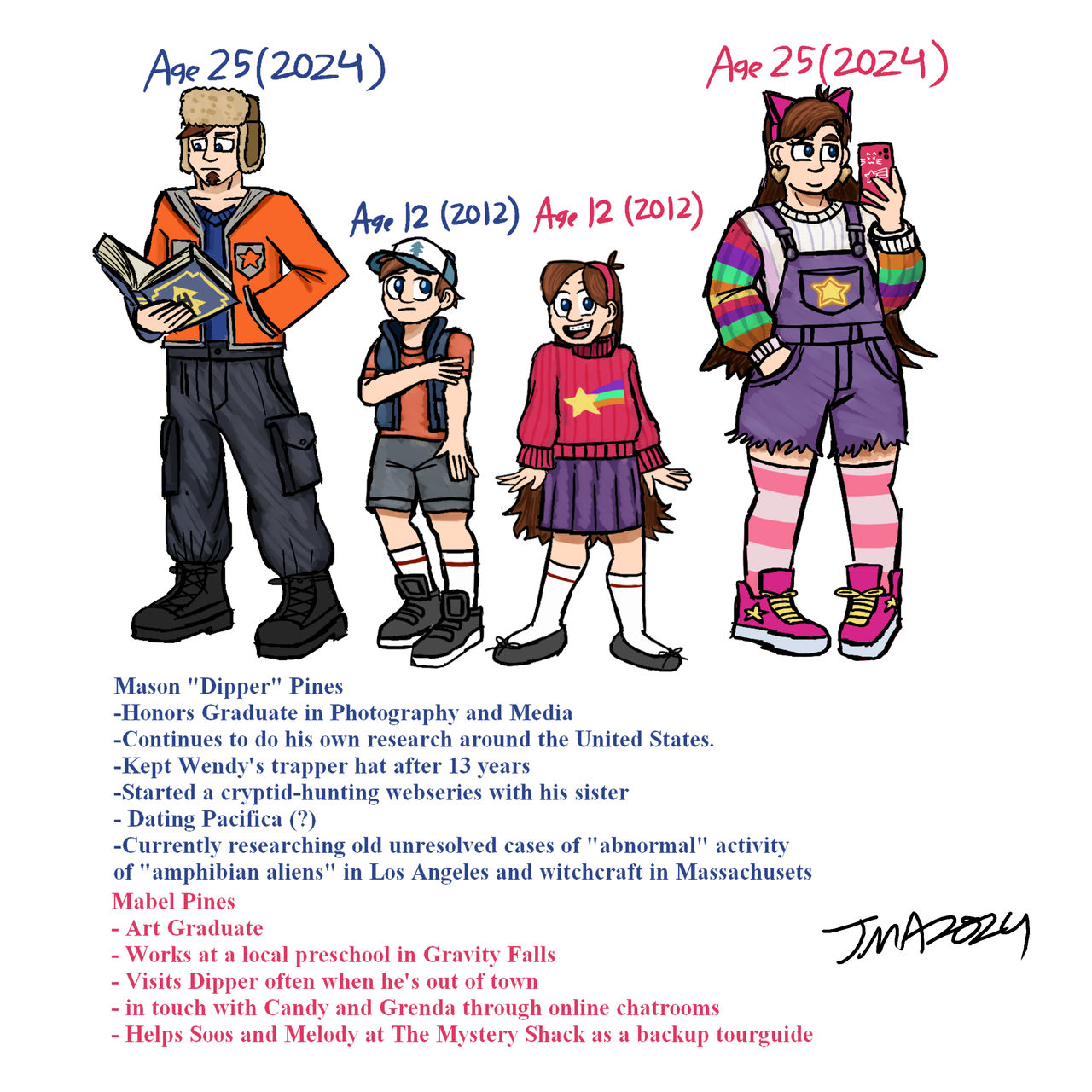Even as years turn into many, many summers, some things about our world, like the way everything seems to stick to the ground, stay pretty much the same. It’s a force that pulls us down, keeps the oceans where they belong, and, well, makes sure apples don't float off into the sky. In a place like Gravity Falls, where the usual rules sometimes bend a little, thinking about these basic forces can feel a bit like looking at something you thought you knew inside and out, but seeing it with fresh eyes for the very first time.
You know, as time marches on, and we look back or forward through the seasons, it's pretty interesting to consider how the very ground beneath our feet, and the vast open space above, really works. We often just take for granted that things fall when we drop them, or that water stays in its place, but there's a whole lot happening behind the scenes, really, that keeps it all together.
So, we're going to spend a little time exploring some of these invisible helpers and hidden movements that shape our planet and even what's out among the stars. It’s about understanding the deep-seated connections that hold everything together, in a way, even in a spot where the ordinary often turns into something quite unexpected, like in Gravity Falls many summers later.
Table of Contents
- How Do We Even Sense Earth's Invisible Hand?
- What Happens When Ice Rivers Shift in Gravity Falls Many Summers Later?
- Is There More to the Universe's Grip Than Meets the Eye?
- Can We See the Ripples of Air in Gravity Falls Many Summers Later?
- How Do Satellites Map the Earth's Shifting Weight in Gravity Falls Many Summers Later?
- What Becomes of Stars When Their Pull Takes Over?
- What Keeps Things Afloat When They're Pushed Around?
- Are Old Stars Still Burning Bright in Gravity Falls Many Summers Later?
How Do We Even Sense Earth's Invisible Hand?
The idea of things pulling on each other, that invisible tug, is something people have been trying to figure out for a very, very long time. There's a particular way of putting it into numbers, a sort of rulebook, that helps us figure out just how much one thing pulls on another. This rulebook came about after folks watched things happen over and over again, doing lots of careful tests and just observing the world around them, you know, for ages.
Actually, there's a new space mission, a satellite that's been sent up, that's helping us get a much better sense of the Earth's own pull. It's giving us some really neat hints about how the water levels in our oceans are changing, which is pretty important, as a matter of fact, for everyone living near the coast.
Then there are these two special satellites, kind of like twins, that belong to NASA. They're called the "Gravity Recovery and Climate Experiment" satellites, or GRACE for short. These two can actually spot underground water, just by feeling for tiny, tiny shifts in the Earth's pull. It’s pretty amazing, honestly, how sensitive they are to these small changes.
This method of looking for groundwater is quite clever. By noticing even the slightest differences in how the Earth pulls on them, these satellites can basically tell us where there's more or less water hidden away beneath the surface. It’s like they have a special sense for the weight of the land, which is quite useful for managing our water supplies, especially in places like Gravity Falls many summers later, where knowing what's underground could be quite a thing.
What Happens When Ice Rivers Shift in Gravity Falls Many Summers Later?
Imagine a really big pile of snow, like, truly enormous, that has just kept building up over many, many years. Over time, all that snow gets squished down and turns into a solid block of ice. That's pretty much what a glacier is, a giant chunk of frozen water that's been around for ages, just sitting there.
This hard, crystal-like stuff, the ice, doesn't just sit still, though. It actually gets a different shape and moves along, slowly but surely. It's not like a river of liquid water, but more like a super slow-motion flow, a bit like very thick molasses, if you can picture that. It’s a force of nature that can shape the land over vast stretches of time.
These big sheets of ice, sometimes called "rivers of ice," are quite powerful. They carve out valleys and move huge amounts of rock as they creep along. Their movement, you know, is really influenced by the pull of the Earth, which makes them slide downhill, even if it's a very gentle slope. It’s a clear example of how the Earth's pull affects even the most solid parts of our world.
The changes in these ice rivers, especially as they get bigger or smaller, can actually affect the local pull of the Earth around them. So, if you were to measure the pull in a place where a big ice mass used to be, and then it melted, you'd notice a difference. This is something that could, in fact, be observed in a place like Gravity Falls many summers later, if there were any glaciers around, which is kind of an interesting thought.
Is There More to the Universe's Grip Than Meets the Eye?
When scientists look at groups of stars all bunched together, they sometimes see something a bit puzzling. These star groups don't seem to act the way they should if the only things creating the pull are the stars and stuff we can actually see. It's like there's an extra, invisible hand giving things a tug, which is quite a head-scratcher.
This has led to a really interesting idea, a kind of guess, that there's a huge amount of something out there that we can't see or touch. This stuff, which people call "dark matter," might be what's causing that extra pull. It’s a pretty big mystery, honestly, because we can't directly observe it, but its effects seem to be all around us.
Basically, this "dark matter" idea suggests that the universe has a lot more invisible stuff than visible stuff, and this hidden material has its own pull. So, the things we see, like stars and galaxies, are just a small part of the whole picture. It’s a concept that really makes you think about what else might be out there, influencing everything without us even knowing it, literally.
This concept of unseen forces is a bit like the strange occurrences that might happen in a place like Gravity Falls. You know, things happen that don't quite fit the usual explanations, and you wonder if there's something else at play, something you can't quite put your finger on. It’s a similar feeling of mystery, really, just on a much bigger, cosmic scale.
Can We See the Ripples of Air in Gravity Falls Many Summers Later?
There are these things called "gravity waves" in the atmosphere, and they're a real puzzle for people who try to figure out what the weather will do or how the climate is changing. The tricky part is that they're mostly invisible to our weather models, the computer programs we use to predict things. It’s like they're hiding in plain sight, which is kind of frustrating.
The main issue, you see, comes down to how our satellites look at them. Satellites are amazing, but they have their limits, and these particular waves are just hard for them to spot clearly. It’s a bit like trying to see tiny ripples on a huge lake from way up high; they just don't stand out enough for our current tools to pick them up easily.
Now, there's a different kind of map, one that was put together using information from the same GRACE mission we talked about earlier. This map shows us where the Earth's pull changes from one spot to another. It’s a pretty neat way to see the Earth’s hidden variations, actually, almost like a secret map of its weight.
On this map, the parts that are shown in a deep blue color are places where the Earth's pull is a bit less than what you'd expect. These areas have a lighter touch, so to speak. This kind of information, about the Earth's varying pull, is pretty important for all sorts of things, and it shows us just how complex our planet is, even in a quiet spot like Gravity Falls many summers later.
How Do Satellites Map the Earth's Shifting Weight in Gravity Falls Many Summers Later?
The GRACE mission, with its twin satellites, has truly changed how we look at our planet's pull. By flying one behind the other and carefully measuring the tiny changes in distance between them, they can figure out where the Earth's pull is stronger or weaker. It’s a pretty ingenious way to take the Earth's pulse, you know, its gravitational pulse.
This information lets scientists create those maps we mentioned, the ones that show areas where the Earth's pull is a little bit different from the average. These shifts in pull can tell us a lot about what's happening on the surface and even deep inside the Earth. For example, a big ice sheet melting away will cause the pull in that area to become slightly less.
Basically, these satellites are like super-sensitive scales in space, weighing different parts of the Earth. When water moves around, whether it's in the oceans, under the ground, or locked up in ice, it changes the local weight of that area, and the GRACE satellites can spot those changes. This is how they help us understand things like how much water is stored underground, which is quite a feat.
Thinking about these subtle changes, it's pretty wild to imagine how they might be observed in a place like Gravity Falls many summers later. Perhaps the local weirdness of the town could even affect the readings, or maybe these shifts in the Earth's weight are part of what makes the town so peculiar. It's definitely something to ponder, anyway.
What Becomes of Stars When Their Pull Takes Over?
When a star gets to the very end of its life, the force that pulls everything inward, its own pull, causes the last bits of the star's stuff to squish together and become incredibly packed. This is a pretty dramatic moment in a star's existence, a real transformation, basically, as all that material gets squeezed into a much smaller space.
This particular stage is called the "white dwarf" stage. It’s a star that's become extremely packed in, meaning a tiny bit of it would weigh a tremendous amount. Imagine trying to pick up a spoonful of something that weighs as much as a truck; that's kind of what we're talking about here. It's just incredibly dense, truly.
White dwarfs give off a light that's bright and hot, like something that's been heated to an unbelievable temperature. But once all of their inner workings have finished up, they eventually stop shining. They're like the embers of a dying fire, still glowing for a while but with no new fuel to keep them going. It’s a fascinating part of the life cycle of stars.
The way these stars collapse is a powerful example of how the pull of matter on itself can create something so incredibly compact. It's a reminder that even the biggest things in the universe are subject to these fundamental forces, and that everything, even stars, has a natural end point, in a way, just like things eventually settle down in Gravity Falls many summers later.
What Keeps Things Afloat When They're Pushed Around?
When we talk about things moving in water or air, there's a kind of wobble or disturbance where the push of the water or air itself acts like a spring, trying to bring things back to where they naturally settle. It's like if you push a floating toy down in the bathtub; it bobs back up. That push-back is what we're talking about, essentially.
This force that pushes things back into place is often called "buoyancy." It's the reason why boats float, or why a hot air balloon rises. When something is moved from its natural spot in a fluid, whether it's water or air, this force tries to restore it to that balance. It’s a pretty simple idea, really, but it's at play everywhere around us.
So, a wave disturbance where this pushing-back force is the main thing that makes it return to its original state is a pretty common occurrence. It helps explain how ripples form on a pond or how certain movements happen in the atmosphere. It's all about that natural tendency for things to find their level again, you know, after being disturbed.
Are Old Stars Still Burning Bright in Gravity Falls Many Summers Later?
White dwarfs, those incredibly packed remnants of stars, do shine with a light that's very, very hot and bright. They're basically the leftover cores of stars that used to be much bigger, and they're still giving off a lot of heat that's trapped inside them. It’s like a super-hot, tiny ember that just keeps glowing for a very long time.
But there's a catch: once all of their stored energy, the heat they've held onto, has finally radiated away, they will eventually cool down and stop giving off light. They don't have any more fuel to burn, like a regular star does. So, they just slowly fade away into the cold, dark stretches of space, which is kind of sad, really.
So, while they shine for a very, very long time, these white dwarfs aren't burning in the same way that a young, active star does. They're simply cooling off. It's a slow, quiet end to a once fiery existence, a testament to the fact that even the brightest things in the universe eventually dim, just like memories in Gravity Falls many summers later might soften around the edges.
Related Resources:



Detail Author:
- Name : Mandy Heaney
- Username : silas.morissette
- Email : assunta57@bayer.com
- Birthdate : 1986-07-26
- Address : 23727 Chase Islands Apt. 847 Virgilville, NE 91787
- Phone : +1-570-656-2187
- Company : Brown and Sons
- Job : Manufacturing Sales Representative
- Bio : Ea numquam excepturi commodi consequatur vero. Voluptas aut nesciunt perspiciatis consectetur hic. Officia odit quasi ea tenetur voluptatem quis.
Socials
instagram:
- url : https://instagram.com/cummeratak
- username : cummeratak
- bio : Porro laboriosam sit temporibus provident. Sint voluptatem quo natus explicabo labore.
- followers : 5883
- following : 2211
facebook:
- url : https://facebook.com/katrinecummerata
- username : katrinecummerata
- bio : Animi saepe sed voluptatem deserunt ut facere.
- followers : 4285
- following : 1181
tiktok:
- url : https://tiktok.com/@katrine_cummerata
- username : katrine_cummerata
- bio : Reiciendis aliquid quaerat non consequuntur consequatur quae.
- followers : 5121
- following : 1762
twitter:
- url : https://twitter.com/katrine_cummerata
- username : katrine_cummerata
- bio : Architecto ratione ex nam quo. Et omnis dicta culpa expedita voluptas illo. Consequatur ipsum consequatur magnam quasi dolor. Temporibus et magnam iusto.
- followers : 324
- following : 1644